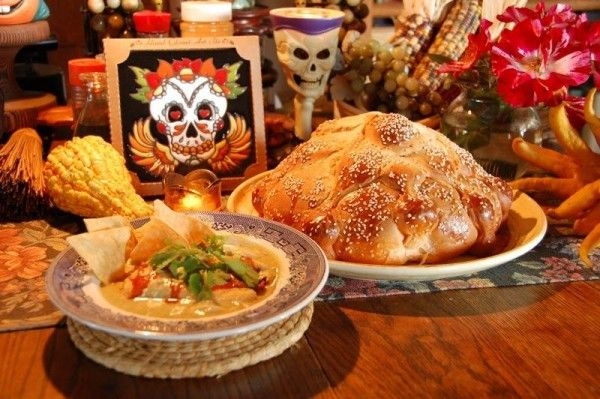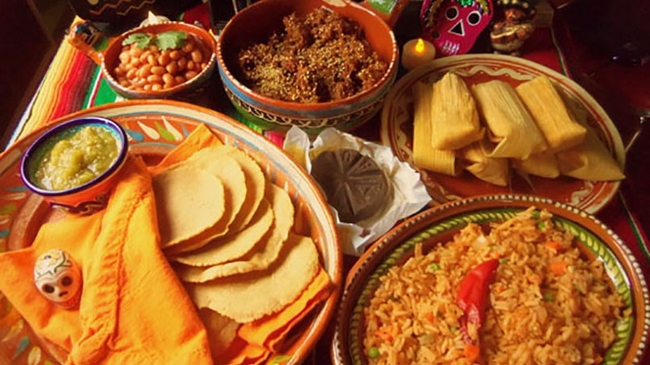On the Day of the Dead (Nov. 2), tradition holds that not even the deceased can say no to the mouth watering Mexican dishes. The Day of the Dead is an ancient celebration with over 3,000 years of history and kept alive by 41 ethnic groups whose traditions are as diverse as their regional dishes.
Once a year, far from the world and its pleasures, the dead come back to savor their favorite foods and sip their coffee with cinnamon and piloncillo, pozol, or pulque – because there isn't a better way to reunite with loved ones than with food.
In a paper “Eating with the Dead,” Alessandro Lupo of the Mexican Academy of History writes that death is presented as an event of the most profound reflection: “Where do I come from? Where am I going? What is the meaning of life? Is there another life after this one? But Mexicans also mock death, play with it, and virtually eat it by turning it into sugar candies. It is even said that in Mexico, even death is sweet.”
In the Mesoamerican cultures, the dead were believed to have the power to intervene before the gods to bring rain, fertility on earth, and the continued growth of the “teocintle” or wild corn – the primary food source for the indigenous people and the base of the Mexican diet. According to the National Museum of Popular Cultures in Mexico, 605 recipes based on corn have been registered, such as taco, tortilla, tlacoyo, tostada, and tamal, among others.
Corn-based foods – such as tortillas and tamales – are found on the altars to honor the dead, along with drinks such as pulque, pozol, or chorote. Other foods on the altars are mole, beer, pot coffee, Mexican fruits and sweets, and calaveras or sweet skulls.
The Nahuatl word mole (“mulli”) means salsa and is by far the most popular Mexican sauce. It is prepared mainly with chili peppers such as pasilla chili, mulatto chili, chipotles, moritas, and ancho chili. Other ingredients include sesame, hazelnuts, almonds, garlic, onions, fat peppers, cloves, peanuts, peeled nuggets, raisins, thin cinnamon, piloncillo, anise, dark chocolate, and plantain.
Another popular dish on the altar is tamal. The tamal, from the Nahuatl word “tamalli,” is a wrapped corn-based food used in religious rituals, offerings, and tombs. There are many ways to prepare it, with more than 500 recipes. The tamal conquers palates beyond the Mexican borders.
Pozol or chorote is a drink based on corn and cocoa placed in a clay jar. It is one of the most important fermented beverages of pre-Hispanic Mexico that continues to be consumed during festivities and ceremonies such as the Day of the Dead in southeastern Mexico among the indigenous Chontales, Choles Lacandones, Mayas, and more.
The pulque, known as the nectar of the gods, is a fermented drink whose name comes from the Nahuatl “puliuhqui,” which means “to be corrupted.” A popular drink among Mexicans, it has won its place on the altars.
Traditionally, the Aztecs decorated their sugar skulls (or calaveras) with figures made with amaranth and edible pasta, but each region has a different way of making them. These skulls have become popular in both the United States and Europe as the Day of the Dead symbol – that special occasion when departed ones return to a feast of flavors and aromas and commune with their living relatives.

